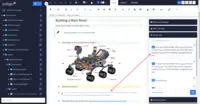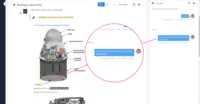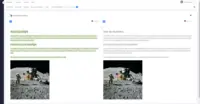Overview
What is Paligo?
Paligo, headquartered in Stockholm, offers their component content management system (CCMS), supporting the creation and publishing of technical documentation and help systems.
Awards
Products that are considered exceptional by their customers based on a variety of criteria win TrustRadius awards. Learn more about the types of TrustRadius awards to make the best purchase decision. More about TrustRadius Awards
Reviewer Pros & Cons
Pricing
Entry-level set up fee?
- Setup fee optional
Offerings
- Free Trial
- Free/Freemium Version
- Premium Consulting/Integration Services
Would you like us to let the vendor know that you want pricing?
47 people also want pricing
Alternatives Pricing
Product Details
- About
- Integrations
- Competitors
- Tech Details
- Downloadables
- FAQs
What is Paligo?
Paligo is an enterprise-grade cloud-based Component Content Management System (CCMS) with single-sourcing content reuse for technical documentation, training content, policies and procedures, and knowledge management. Paligo is 100% XML in the back end, based on a modified version of DocBook - an established open standard developed for technical documentation. This is to provide future-proofing as well as extensibility and transformability for any current and future applications. The strict structure of XML and solid validation it provides offers possibilities and a consistency that, according to Paligo, no other format can provide.
Companies seek to make their documentation more efficient through single-sourcing and reuse. But many single-sourcing projects fail due to the steep learning curves and costs of implementation of traditional systems. So cloud-based solutions like Paligo aim to enable greater collaboration and efficiency. Using modern web technology reduces the costs of implementation, to increase usability and thereby user acceptance. A cloud-based authoring and publishing platform to reuse and single-source documentation with a clear focus on usability and user acceptance can improve the chance of realizing the return of investment and actually achieving the increase in efficiency.
In an information-enabled world, content is required to help solve problems and guide decision-making. Siloed content creation and management technology have led to content duplication, inconsistent content, and challenges finding the right content for customer and employee experiences. A component content management system (CCMS) like Paligo aims to change that.
Paligo's top features at a glance:
- Structured Authoring
Structured authoring helps make content consistent, accurate, and future-proof. The XML editor enables content reuse, making structured authoring easier.
- Content Reuse
Reuse content at scale with topic-based authoring and smart single sourcing features such as component reuse, block content reuse, the Paligo text fragment reuse, dynamic variables, and conditional content.
- Multi-Channel Publishing
Paligo takes multi-channel publishing to another level. Publish to HTML5, PDF print, SCORM eLearning, Zendesk, Salesforce, GitHub, BitBucket, Amazon S3, and much more.
- Versioning
Paligo features version history and roll-back, version branching, and release management made specifically for technical writers and content authors.
- Translation Management
Paligo Features
- Supported: Single sourcing
- Supported: Content reuse
- Supported: Multi-channel publishing
- Supported: Translation management
- Supported: Contributor editor
- Supported: Structured authoring
- Supported: Topic based authoring
- Supported: Versioning
- Supported: Branching
- Supported: Assignment planner
- Supported: REST API
- Supported: Variables
- Supported: Conditional content
- Supported: CCMS
- Supported: Integrations
- Supported: XML editor
- Supported: Docbook
Paligo Screenshots
Paligo Videos
Paligo Integrations
- Zoomin
- Slack
- GitHub
- GitLab
- Microsoft Teams
- Phrase Localization Platform
- Freshdesk
- Crowdin
- Bitbucket
- Algolia
- Amazon S3 (Simple Storage Service)
- Microsoft Azure
- Elastic Enterprise Search
- Oxygen XML Editor
- Google Analytics
- Disqus
- Google Tag Manager
- Mixpanel
- Intercom
- MathType
- Salesforce Service Cloud
- ServiceNow Customer Service Management
- Netlify CMS
- LinkApi, by Semantix
- Zendesk Suite
- Fluid Topics
- DeltaXML Compare and Merge Tools
Paligo Technical Details
| Deployment Types | Software as a Service (SaaS), Cloud, or Web-Based |
|---|---|
| Operating Systems | Unspecified |
| Mobile Application | No |
| Supported Countries | Global |
| Supported Languages | English |





















